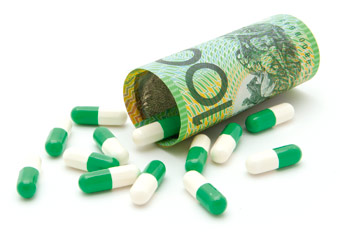CEO Blog

PBS Price Cuts Undermine Long Term Innovation
Earlier this week, pharmaceutical companies across the country copped a hefty financial blow, as the Federal Government’s PBS cost saving agenda took flight.
Under this plan, expected to save the Federal Government around $3.7 billion over the next five years, all branded medicines that have been listed on the PBS for five years or more will be available to the Government at 5% less than it has paid to date.
While taxpayers will see a difference in the price of high volume generics (known as F2 medicines) under this plan, those prescribed specialty branded medicines will not see any difference at the pharmacy counter. That’s because a patient’s co-payment will remain the same regardless of what the Government pays the pharma company.
This decision will affect dozens of branded medicines and almost every pharmaceutical company in Australia.
The general perception is that pharma companies can afford it. But behind the scenes, and what many Australians don’t understand, is that pharma companies are innovators, educators and philanthropists, consistently funding important clinical trials of new drugs that may change lives, educating the medical community about new technologies and providing millions of dollars in financial support to health programs and initiatives.
In addition, pharma companies consistently support extensive compassionate programs enabling patient access to specialty medicines not yet listed, that might otherwise be unaffordable.
Not every drug makes it to market. For every innovative therapy that becomes available and changes lives, there are hundreds of others that fail – in some cases, after millions of dollars have been spent in development. This is not a waste. Many a brilliant discovery was made on the back of a litany of supposed ‘failures’.
This is the reality of innovation and yes, it costs money.
While positive for the Commonwealth drug budget, these latest PBS cost saving measures pose an unprecedented commercial challenge for the pharmaceutical industry and in particular, for innovator pharma companies.
Remember, Australia’s pharma industry invests over $1 billion every year in health and medical research, exports billions in manufactured goods and indirectly employs around 20,000 Australians.
It is vital this industry is financially supported. This is the first forced price cut introduced by the Government - we don’t know if it will be the last.
If prices are further reduced, there is a real possibility pharma companies will remove some specialty branded medicines from the PBS because it won’t be commercially viable - companies may not be able to sustain the supply of their products to the Government at a reduced rate in the long term.
If this happens, cutting edge, life saving drug therapies currently listed and being used to treat Australian patients may become unavailable – and this is a great pity for our community.
There is little doubt PBS pricing changes WILL impact innovation. Trials of new drugs are costly and pharma companies will simply not have the same commercial incentive to include Australian sites in global studies of new drugs and technologies.
This is disappointing. Not only does it deny patients the opportunity to receive innovative drugs, potentially life changing therapies, it also fails to recognise the massive economic boost these trials provide to Australia in terms of funding and employment at trial hospitals and other academic and research institutions. These programs create employment for scientists and researchers and contribute to our ‘knowledge economy’.
Further, the market prices able to be achieved with new therapies currently in development will be benchmarked against reduced PBS prices from 1 April.
Effectively, it will be more difficult for new innovator drugs to achieve Government reimbursement because the innovation-driven development companies will not be able to match the eroded price or their new therapy will need to achieve almost impossible clinical improvements to justify the same price achievable elsewhere in the world.
The community should also be aware that for those at the commercial coal face – the pharma companies - the opportunity to increase prices once a drug has been listed on the PBS is non-existent.
We wear the costs of any manufacturing price rises or any significant currency devaluations from when a drug is listed, unlike private health insurers for example who are accustomed to achieving in excess of CPI price increases each year.
Pharmaceutical companies like ours need incentives to invest in new therapies, contribute to local and international clinical trials and also, to pay the substantial upfront licensing, acquisition and regulatory fees required to provide cutting edge therapies to the community.
The reality is that to remain competitive and keep innovating, the pharmaceutical industry must be incentivised to continue investing in Australia.
I ask the Government to remember its commitment to innovation. A truly innovative economy and pharmaceutical industry requires the financial ballast to achieve.



